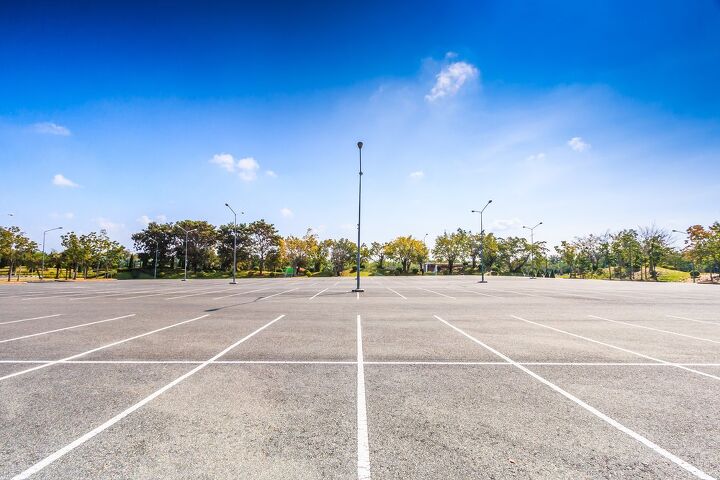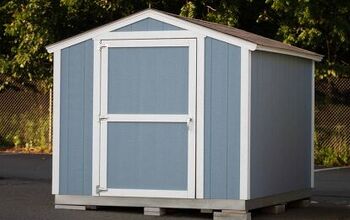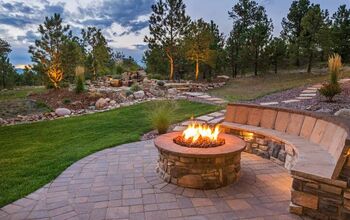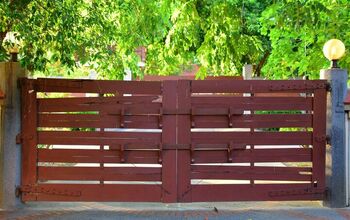How To Build A Leveling Drag (Step by Step Guide)

When your lawn needs leveling and you are short of cash, you can take charge of matters and build your own leveling drag. There is no need to spend hundreds of dollars on a harrow or thousands of dollars on a garden tractor. In fact, you easily build a leveling drag that you’ll be able to pull yourself.
The easiest way to build a leveling drag is to modify a section of chain link fence and attach it to a rope to be pulled by hand or by a tractor. Other inexpensive materials that are easy to find may also work. We’ll discuss the steps for turning the materials you already have into a leveling drag with just an hour’s effort. But first, let’s do a refresher on why you may need a leveling drag for your lawn or yard.
Do You Need Minor Grading or Resloping Services?
Get free, zero-commitment quotes from pro contractors near you.

What Is a Leveling Drag?
As the name indicates, a leveling drag is a tool that is specially designed to level a yard, parking lot, driveway, and more. These tools that are manufactured commercially are generally made of heavy-duty steel and high-quality powder coating, offering durability and resistance to rust and corrosion. However, in a pinch, you may need to craft your own leveling drag for use around your property.
Uses For Leveling Drags
In general, leveling drags can help smooth out minor bumps and make your lawn more even. By doing this, you can make it significantly easier to mow without cutting too high, too low, or hitting a bad spot and injuring yourself.
For low spots or holes in your lawn, you will need to fill them before using a leveling drag. This can be done by adding soil or compost to the affected areas. Dragging a mat or a mesh (or other materials we will discuss below) can also press seeds into the ground to help them stay in place and encourage germination. However, the same result can be achieved by raking the soil first and covering seeds with more soil.
Leveling drags can be pulled by hand or attached to a rider mower or garden tractor. Pulling a drag mat over loose soil pulls up rocks and organic debris, too. When you make your own leveling drag from a piece of chain link fence, storage is easy. All you have to do is to roll it up for some convenient corner of your garage or storage shed.
And the great thing about building your own leveling drag is that you can customize it for any leveling tasks, not just leveling your lawn, but also leveling gravel for parking lots and topsoil for gardening.
How to Build a Leveling Drag From A Chain Link Fence
With a better understanding of the benefits of leveling drags, let’s dive right into our how-to for building a leveling drag from a piece of chain link fence.
To build a leveling drag from chain link fence, you will need:
- A piece of chain link fence four feet wide and six feet long. It’s OK if the piece of chain link fence is up to 10 feet long, but it’s easier to work with a 6-foot section of fence if you are dragging your level by hand.
- 15 feet of ⅜” diameter rope
- A knife
Step One: Cut the Rope
Place the section of chain link fence on a flat, hard surface, like the floor of your garage. Then, cut a section of rope approximately 6 feet long. It does not have to be longer if you are working with a section of chain link fences that is longer than 6 feet. You will be attaching the rope to the 4-foot side, the height of the fence when it stands up.
Step Two: Assemble the Leveling Drag
Tie one end of the rope to the left side of the 4-foot side of the section of fence. Tie the other end of the rope to the right side of the 4-foot side of the section of fence. Pull on the center of the rope to make a V shape.
Quick Tip: If you are dragging the level by hand, you can make it easier to hold by making a loop in the free end of the rope. Also, chain link fencing tends to roll up. To prevent this, you can place heavy objects on the drag when you use it to level your yard. Bricks, blocks, and boards work. Because of this, it is often best to use a garden tractor or rider mower to pull your leveling drag.
How to Build a Leveling Drag From Other Materials
What if you don’t have a piece of chain link fence? What if you don’t have the muscle power or machine power to drag a long piece of chain link fence, plus the weight you have to put on top of it to keep it flat, back and forth across your lawn or acreage for hours on end?
The solution is to build a smaller drag. For this project, you will need:
- Two pieces of 6 x 6 lumber at least 2 feet long but not more than 4 feet long.
- Two pieces of sturdy metal for connecting the pieces of lumber to each other. Unistrut, used for electrical work, is a good choice. The two pieces of unistrut need to be at least 2 feet but no more than 3 feet long, both pieces the same side.
- Ten feet of ⅜ “ rope
Step One: Gather Lumber
Find some pieces of leftover 6 inch x 6 inch lumber. You won’t need more than two pieces of 2 feet each. It is OK if your 6 x 6 lumber is cut longer, but you don’t want to cut it shorter, or you will spend too much time dragging it back and forth.
Step Two: Connect Lumber to Unistrut
Next you will need to connect the two pieces of lumber to something that is about two feet long. If you happen to have electrical conduit, or unistrut, that will work perfectly. The unistrut will be the connecting piece that does the leveling for you, so it needs to be level.
It will fit on the bottom of your leveling drag. Screw the two ends of the metal pieces into the 6 x 6s. This will keep pressure on the drag. Be sure to attach the flat side of the unistrut to the lumber.
Step 3: Attach the Rope
When you have attached the connecting pieces to the lumber, flip it over so the connecting pieces are on the floor of the shop or garage where you are working. Attach one end of the rope to the middle of the first cross-member and the other end of the rope to your garden tractor or rider mower.
That’s all there is to it; off you go!
What Else Can Be Used To Build a Leveling Drag?
If you don’t have easy access to lumber or chain link fence, you can use old bed springs, wooden pallets, or even scrap rails once used for railroad maintenance. At this point, you’ve likely gotten the idea. Simply attach one end of a 10-foot segment of ⅜” rope to the wooden pallet or old box springs that you will use as your leveling drag.
The other end of the rope attaches to your tractor or is what you grip onto to pull the leveling drag by hand.
Do You Need Minor Grading or Resloping Services?
Get free, zero-commitment quotes from pro contractors near you.

Frequently Asked Questions
Can you level your yard with sand?
It is possible to level a lawn with sand, but there are several precautions you need to take first. Some varieties of sand are very acidic and even grass won’t grow on extremely acidic soil. The problem with acidic sand is that it liberates toxic heavy metals that can interfere with plant growth, and, in rare cases, even pose a danger to pets and people.
When you level your yard with sand, you need to take the pH of your soil first. There are test strips and pH meters at most of the larger yard and garden supply centers. If the addition of soil makes your lawn too acidic for growing turf, you can add lime to make it more alkaline. Ask your garden center about how much lime to use after you have measured pH.
Is it possible to level a large yard with a leveling drag?
There is no size limit for using a leveling drag. However, a more expensive, commercial, heavy-duty box scraper will get the job done a lot faster, especially if you have holes and hills on your lawn that you need to level.
Can I use hand tools to level my lawn?
It is possible to use the tined side of a rake to fill in holes and the flat side of your rake to flatten hills. Or, if you need a clear border of the area you are leveling, you can use a flat-edged spade. However, hand tools are only useful for very small areas that need leveling. Regardless of the size, leveling can be a very labor intensive job and even a few hundred square feet calls for a leveling drag.
Related Guides

We are a team of passionate homeowners, home improvement pros, and DIY enthusiasts who enjoy sharing home improvement, housekeeping, decorating, and more with other homeowners! Whether you're looking for a step-by-step guide on fixing an appliance or the cost of installing a fence, we've here to help.
More by Upgraded Home Team



























